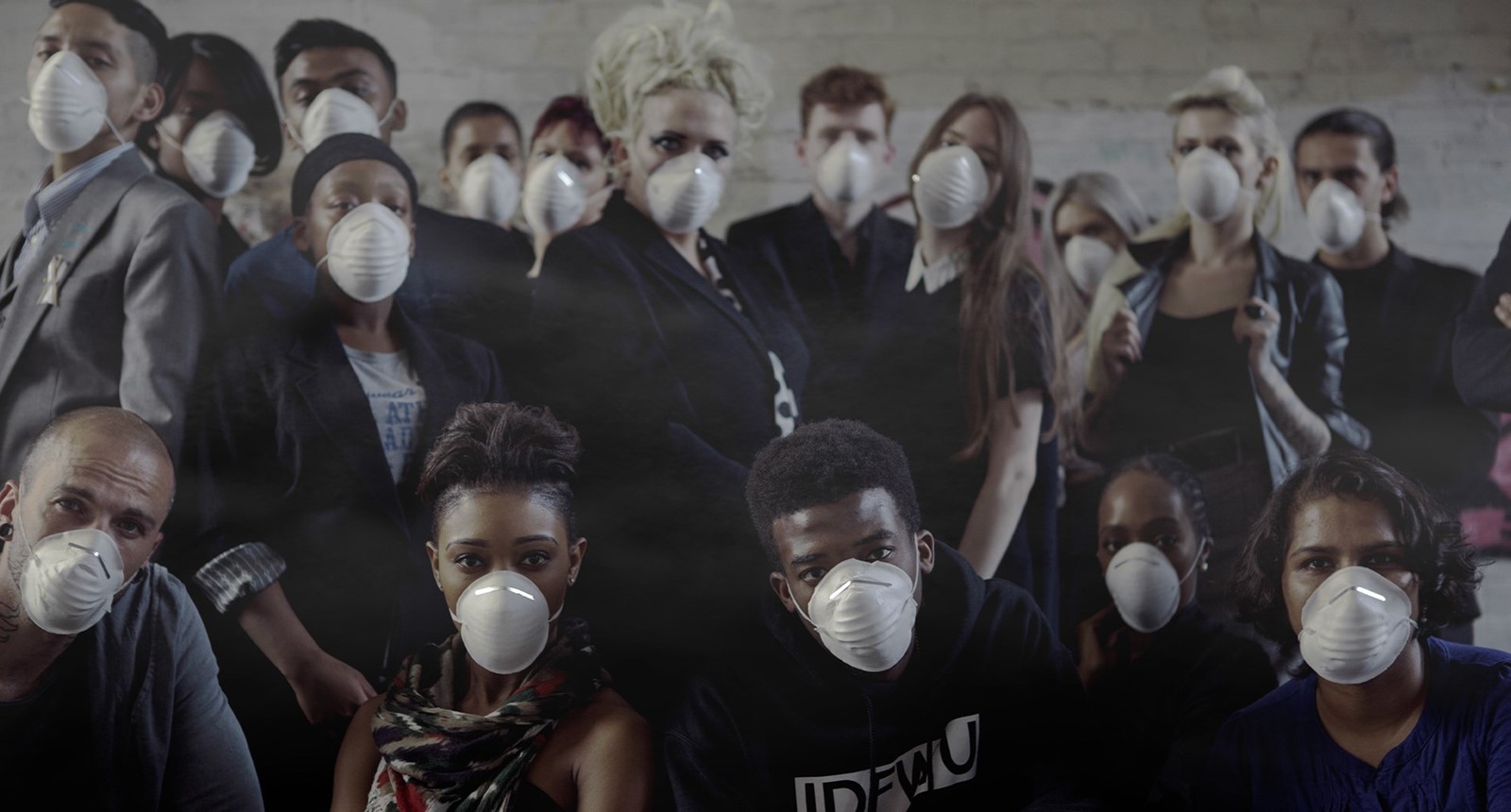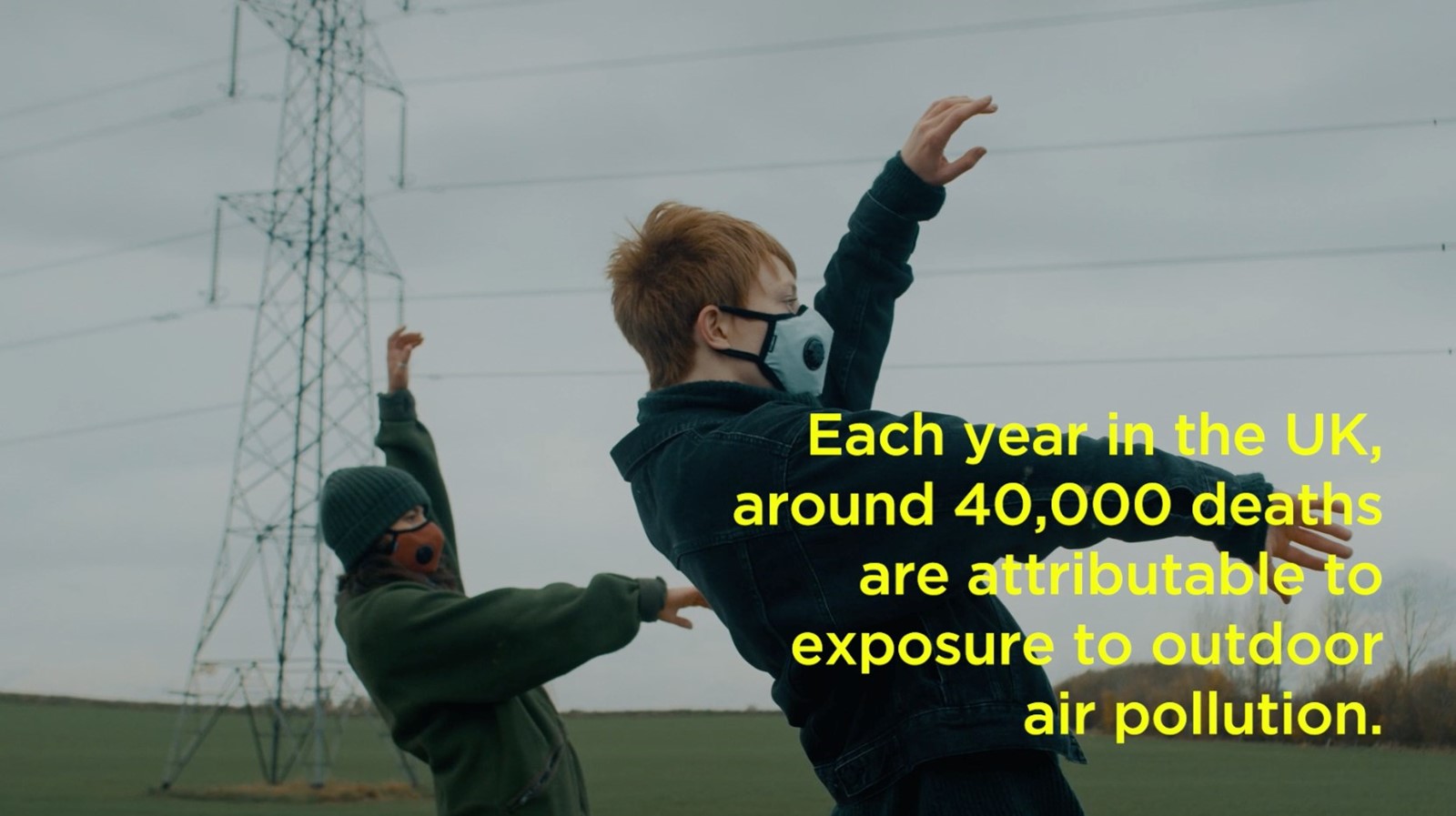Caring about air pollution isn’t as cool as going vegan or quitting plastic – but a new gen of young disruptors are attempting to change that
When 20-year-old Daze Aghaji moved back to London after six years at boarding school in Skegness, Lincolnshire, she was annoyed that her asthma came back. “When I was younger I used to have asthma, and I didn’t have it when I was in Lincolnshire,” she says, passion trembling in her voice over the phone. Skin problems, like eczema, acne, and itchy eyes, also returned, along with her asthma, in London. “That was when I knew something needed to be done.”
Now a student at Goldsmiths University in south east London, Daze believes her health issues are a result of the British capital’s illegal levels of air pollution, which it’s been grappling with since 2010. “It hit me, the air not being as good,” she says from her shared house on a buzzing New Cross street.
Air pollution – the presence of harmful particles in the air we breathe – is a national crisis in the UK. An estimated 36,000 people die prematurely in Britain every year because of it, and it’s particularly bad in London, which has overtaken the EU’s annual legal limit of nitrogen dioxide (from road traffic and factories burning fossil fuels) within one month every year since 2007. The air meltdown is global, with nearly one in every ten deaths in 2017 a result of pollution, according to a major new study on global air published in April.
“If kids have the sense to know something is dramatically wrong, I don’t get what the government is doing” – Daze Aghaji
But you wouldn’t necessarily know all this. In comparison to more mainstream environmental issues, like quitting plastic straws and bottles, or going vegan, caring about air quality is still catching up. According to some estimates, 70 per cent of London teenagers aren’t aware of how bad the capital’s air is. This could be because much of the buzz surrounding air pollution is all dreary posters, stuffy documentaries, and lifeless infographics from out-of-touch charities failing to capture the attention of new voices and the next generation. Because of this, air pollution isn’t a household anxiety. Instead, it’s more routinely thought of as a distant issue that’s dull and non-urgent.
But this misrepresents the threat of polluted air. Its effects are long-term, deadly, and need to be more widely known, says Dr Maria Neira, the director of the World Health Organisation’s public health department and one of the world’s top 100 climate policy influencers. “If you don’t have safe water, food and clean air… how can we survive?” she asks over the phone from her office in Geneva, Switzerland.
“We should, from the beginning, tell people that the price of climate change is paid by our lungs and hospitals,” says Neira of the link between global warming and air pollution, both resulting mainly from the use of fossil fuels. “This is something that until now has not been considered.”
This is why Daze is one of thousands of young people trying to “rebrand” air pollution’s public image from something dull and grey into something that everyone shouts about. With subversive ad campaigns, preconception-busting protests, and bunking off school, they hope to fix what they see as a lack of public concern and government action for air quality. Despite the Conservative government launching a new clean air strategy, which it described as “world-leading”, campaigners argue it falls short of providing a proper game plan to cut emissions. “If kids have the sense to know something is dramatically wrong, I don’t get what the government is doing,” says Daze. “We have less than (ten years) to make this dramatic change.”
Daze is part of XR Youth, the youth wing of the headline-grabbing radical activist movement Extinction Rebellion, which attempts to force government action to reduce carbon emissions by 2025 with tactics like shutting down central London and stripping in the House of Commons. Daze stages strikes, plants trees, and distributes leaflets to rework air pollution’s public image and make the government take more radical action. “We’re going to cause havoc until they listen to us.”
The collective is part of an international movement of students skipping school to protest political inaction to climate change. Inspired by Swedish activist Greta Thunberg, the Youth Climate Strike sees kids around the world bunk off school on selected Fridays to protest global warming. “You’ve got dancing, people moshing (and) a party, festival vibe,” says Daze, recalling how she sat down eating her lunch in the middle of Westminster Bridge, refusing to stand up when approached by police, at the February 15 strike. “If this isn’t going to make them take it seriously, what will?”
A group that knows a lot spicing up the public perception of environmental issues is Clean Air Now, an eco-gang of 20-something anti-pollution warriors founded in 2016. Its founders, filmmaker Vasilisa Forbes and graphic artist Claire Matthews, who met the rest of their clan on social networks, aim to tip the view of air pollution on its head through an underground, DIY approach, using creative design and artistic activism to bring air pollution to a wider, younger audience.

Their subversive campaigns include anarchic Kidulthood-inspired anti-pollution billboards warning young people of traffic fumes, an advert campaign showing the effects of pollution on skin using kitsch imagery, a collaboration with British grime artists including JME for a campaign promoting electric vehicles, and artsy, witchcraft-esque posters personifying Mother Nature.
“Traditional environmental activist organisations can be prone to presenting themselves in a visually outdated and unrelatable way, which does little to inspire new engagement,” says 26-year-old Claire, referencing the use of idyllic imagery and soft and forgetful messaging in pollution campaigns from NGOs. “(They) looked more like antihistamine adverts than anything campaign or civic engagement-related.”
The duo’s most recent campaign, CAN Organic, completely overthrows traditional narratives around air pollution. The stunning film, featuring south London youth collective RAWMAR and dance students from a Leyton sixth-form – all of whom have respiratory problems – forces viewers to face the human impact on major cities’ air quality through ethereal dancing and hazy stills.
“Our whole aim was to turn the idea of being environmentally conscious (into) something that everybody can be a part of,” says 27-year-old Vasilisa. “You can still be cool and environmentally friendly. It’s not just a frumpy middle class concept.”
Aside from historically lax air pollution ads, the lack of public awareness around air pollution so far could be down to its inherently foggy nature. “You can see climate change is causing flooding, you can see plastics, but with air pollution, you can’t really see it,” says Daze. This makes engaging with the issue of air pollution more difficult, with individuals unable to know how to make a change themselves. “It’s everywhere,” she adds.
“You can still be cool and environmentally friendly. It’s not just a frumpy middle class concept” – Vasilisa Forbes
We might not see air pollution, but we feel it. “When you breathe polluted, toxic air, you feel it immediately,” says Neira. A growing stack of research points to air pollution’s negative impacts on our general health: in the UK, there are record levels of deaths from asthma and air pollution is increasingly being linked to heart disease, diabetes, and dementia. “You might not know the name of the diseases it’s causing, but you see the linkage very clearly and quickly.”
Much like wealth, pollution isn’t spread equally, with eastern countries like Bangladesh and China bearing the biggest air pollution burden. Even in western countries there’s a racial gap, with pollutants disproportionately inhaled by black and Hispanic Americans despite them being disproportionately caused by white Americans' consumption of goods and services.
It’s also worse for young people: 90 per cent of the world's children breathe toxic air, while growing up in polluted areas increases the chance of teens developing depression, according to one recent study. “The younger you are, the bigger the risk,” says Neira. It’s no wonder young people have to take matters into their own hands.
The narrative around air pollution is already changing. “We have been trying to ‘rebrand’ the climate agenda by saying that this is a question of asthma, this is a question of our lungs, our brains, and our hearts suffering,” says Neira. “When you (ask) people living in a polluted city what is air pollution, they can immediately tell you that their eyes are suffering, they cannot breathe, they can feel it. This is a language that everybody now understands.”

Lawmakers are finally responding to activists’ efforts. Sadiq Khan has launched the Breathe London network, building a map of air quality across the capital using sensors, as well as a new fee to drive in the city centre in an attempt to cut congestion and reduce traffic emissions. Meanwhile, air pollution tech is getting better, with tools like China-based Blue Map and British app London Air bringing the air conversation to people’s smartphones. These changes aren’t anywhere near enough, however. The UK doesn’t look likely to meet EU air pollution limits or WHO guidelines any time soon.
Ultimately, it will be young people, the policy-makers of tomorrow, who change the game. “Young people... I’m sure will be able to move mountains,” says WHO’s Neira. “They recycle, are conscious of plastic bags, cautious with way they use water, (and) use public transport instead of cars. This is the way we will transform our society.”
For Daze, the freight lorries driving through New Cross are a daily reminder of her health problems. “Air pollution is something you can’t escape,” she says.
From the image-conscious young activists’ perspectives, air pollution will be tackled properly once it has been solidified in the public psyche, and seen as an issue people can get involved in, like cutting down on meat and recycling. Despite the hurdles, they won’t be giving up – their mission to rebrand air quality has only just begun. “People have power,” says Daze. “If everyone cares about it, the government will have to listen.”
